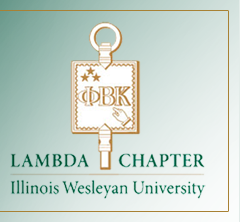Article Title
Tracking the Elephant (Lexodonta africana) Corridor and the Human-Wildlife Conflict in Selela Village
Graduation Year
2016
Abstract
The beastly journey of long-distance migration for the African Elephant (Lexodonta Africana) is important for upholding their connections between diminishing protected areas, especially in northeastern Tanzania. However, human development is encroaching into these corridors, creating a human-elephant conflict, which can ruin livelihoods of villagers, depending on the extent of conflict. This study focused on exploring the hypothesized human-elephant conflict on the Selela corridor, specifically in Selela village, as well as GPS (Global Positioning System) mapping evidence of elephant travel along the projected Selela elephant corridor connecting Ngorongoro Conservation Area (NCA), to Selela Forest Reserve (SFR), and finally to Manyara Ranch. 61 interviews were conducted in the Selela village that consists of about 7,000 Maasai and Wambulu people. The village is adjacent to the SFR, which backs up to the Rift Valley Escarpment. Opportunistic interviews were conducted along the corridor with pastoralists, agriculturalists, Askari gaurds, and one key-informant interview. Furthermore, the corridor was physically mapped by using Global Positioning System to mark each piece of evidence (dung, tracks, browsing, scratching, and wallowing). We found that, after compiling interviews and GPS waypoints of elephant evidence, we can conclude the Selela elephant corridor is currently used for migration during the rainy season. We support our hypothesis that elephants currently travel during the rainy season from NCA to SFR and from Manyara Ranch to Losimangori Mountains (LM), and possibly from LM to SFR, but there was not enough elephant evidence to confirm that area is still connected to the SFR. There is a large human-elephant conflict in Selela village, where elephants often kill humans and destroy farmland. Elephants might travel to the SFR in order to escape dangerous ants in NCA, to eat crops, and for the high phosphorous levels in the forest for lactating females. We hope that this study can be used to help conserve this vital elephant corridor and assist in resolving the human-elephant conflict in Selela village in the wake of increasing human development.
Recommended Citation
Chlebek, Nicole and Stalter, Laura
(2016)
"Tracking the Elephant (Lexodonta africana) Corridor and the Human-Wildlife Conflict in Selela Village,"
CrissCross: Vol. 4:
Iss.
1, Article 2.
Available at:
https://digitalcommons.iwu.edu/crisscross/vol4/iss1/2
Included in
Arts and Humanities Commons, Life Sciences Commons, Physical Sciences and Mathematics Commons, Social and Behavioral Sciences Commons


Comments
Ms. Chlebek also presented this work at the John Wesley Powell Undergraduate Research Conference in 2016. You can read her abstract online.